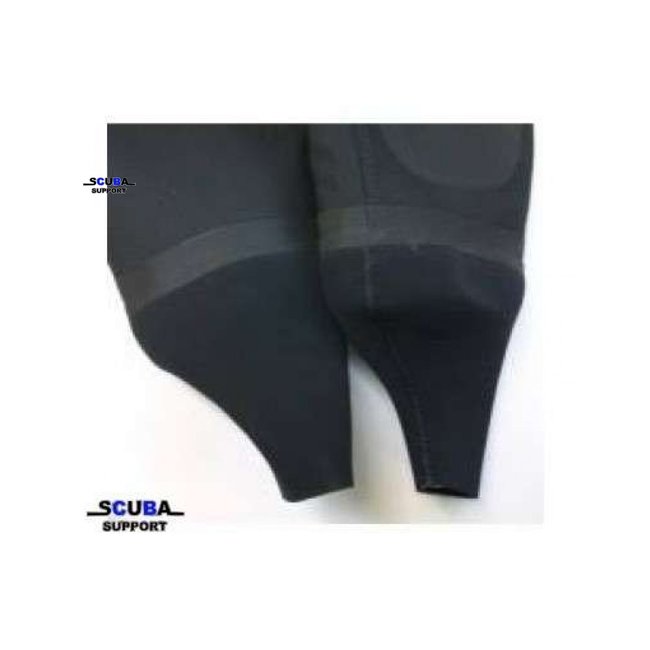Scuba Support Drysuit repair - wrist seal replacement
The best choice
We selected the best products for youFast shipping
Shipping with track and traceSharp pricing
Never pay too muchMost products in stock
Many products standard in stock
Product description
Replace dry suit seal:
Dry suit seals come in many shapes and sizes.
So you have them in different materials, such as latex, neoprene and silicone.
Latex is the most common material choice, this is easily glueable on trilaminate and neoprene.
Neoprene seals have a greater insulation value, this is pleasant in the neck and on the wrists, since these are the parts where you lose heat.
Silicone seals are very smooth and pinch less, but not glueable on the packs, so a ring system will have to be used for this. Several ring systems are suitable for this, a big advantage compared to latex is that it is not digested or decayed.
However, it is important that your seals are properly maintained!
Use odorless talcum powder such as for example Protalk from Mcnett or talcum powders that are suitable for this and NO baby talk, there are perfumes that affect the seals!
The purpose of the talc is 2 empty, firstly the talcum powder preserves the material, and the second aim is to reduce the friction.
With talcum powder you can slide into your seals more easily.
But there are also different models, conical and bottle neck for the wrists. The conical have the advantage that if they are too tight, you can cut / cut a piece so that they become slightly larger and less pinched.
Bottle neck seals, also called bottle neck seals are dimensionally stable. So if they are too tight, they will have to be replaced by a larger model. Note that there may be a difference between the circumference of the left and the right wrist. This is because the muscles in one arm are often more developed.
Contact Scuba Support for appropriate advice and any questions.
Reviews
Specifications
Drysuit repair - wrist seal replacement
0 reviewsReview Scuba Support Drysuit repair - wrist seal replacement
Price is per seal, incl. montage.





